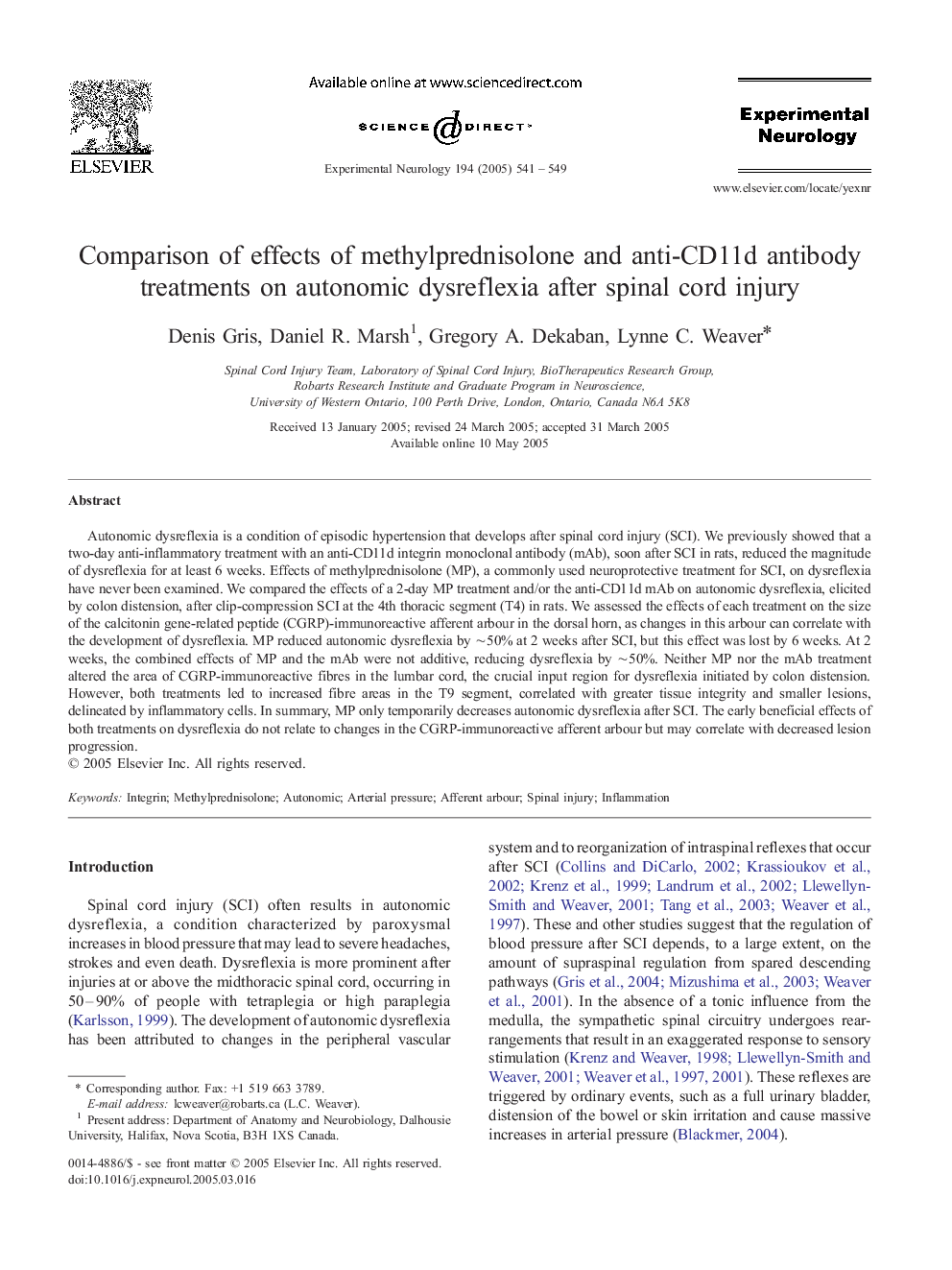| Article ID | Journal | Published Year | Pages | File Type |
|---|---|---|---|---|
| 9192120 | Experimental Neurology | 2005 | 9 Pages |
Abstract
Autonomic dysreflexia is a condition of episodic hypertension that develops after spinal cord injury (SCI). We previously showed that a two-day anti-inflammatory treatment with an anti-CD11d integrin monoclonal antibody (mAb), soon after SCI in rats, reduced the magnitude of dysreflexia for at least 6 weeks. Effects of methylprednisolone (MP), a commonly used neuroprotective treatment for SCI, on dysreflexia have never been examined. We compared the effects of a 2-day MP treatment and/or the anti-CD11d mAb on autonomic dysreflexia, elicited by colon distension, after clip-compression SCI at the 4th thoracic segment (T4) in rats. We assessed the effects of each treatment on the size of the calcitonin gene-related peptide (CGRP)-immunoreactive afferent arbour in the dorsal horn, as changes in this arbour can correlate with the development of dysreflexia. MP reduced autonomic dysreflexia by â¼50% at 2 weeks after SCI, but this effect was lost by 6 weeks. At 2 weeks, the combined effects of MP and the mAb were not additive, reducing dysreflexia by â¼50%. Neither MP nor the mAb treatment altered the area of CGRP-immunoreactive fibres in the lumbar cord, the crucial input region for dysreflexia initiated by colon distension. However, both treatments led to increased fibre areas in the T9 segment, correlated with greater tissue integrity and smaller lesions, delineated by inflammatory cells. In summary, MP only temporarily decreases autonomic dysreflexia after SCI. The early beneficial effects of both treatments on dysreflexia do not relate to changes in the CGRP-immunoreactive afferent arbour but may correlate with decreased lesion progression.
Related Topics
Life Sciences
Neuroscience
Neurology
Authors
Denis Gris, Daniel R. Marsh, Gregory A. Dekaban, Lynne C. Weaver,
